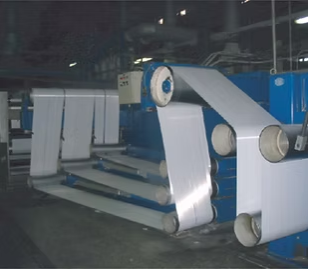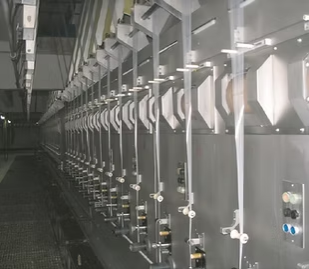UHPC Goes Mainstream: The Role of Advanced Fibers in Modern Design
- pioneerfiber

- Sep 2
- 3 min read
Updated: Nov 13
Information Tags
• Type: 4-minute read
• Audience: Construction professionals, engineers, architects, contractors

The Rise of UHPC in Contemporary Construction
Once considered a niche material for specialized applications, Ultra-High Performance Concrete (UHPC) is now being embraced across the global construction industry. With compressive strengths exceeding 150 MPa, ultra-low permeability, and exceptional durability, UHPC is redefining what’s possible in both engineering and architectural design.
Why UHPC Is Going Mainstream
Several factors are driving this shift:
Increased demand for sustainable, long-lasting materials
Advancements in production technology and supply chain efficiency
Growing recognition of UHPC’s life-cycle cost benefits
And most importantly — the integration of advanced fibers, which unlock UHPC’s full performance potential
How Advanced Fibers Enhance UHPC Performance
Unlike traditional concrete, UHPC relies on a densely packed matrix with minimal porosity. While this provides excellent compressive strength, it also makes the material inherently brittle without fiber reinforcement.
Key Roles of Fibers in UHPC:
1. Crack Control and Post-Cracking Strength
Fibers act as micro-reinforcement, bridging cracks at early stages and maintaining load-bearing capacity even after initial cracking. This ductile behavior is crucial for structural safety and resilience.
2. Enhanced Tensile and Flexural Strength
The inclusion of advanced fibers significantly boosts the tensile and flexural strength of UHPC, often by 3–5 times compared to unreinforced mixes — enabling thinner, lighter structural elements.
3. Improved Impact and Fatigue Resistance
In dynamic environments like bridges or transportation infrastructure, UHPC with advanced fibers offers superior resistance to repeated loading, impact forces, and vibration-induced fatigue.
4. Fire Spalling Resistance
Certain fibers, such as PVA fibers, contribute to fire safety by reducing explosive spalling during high-temperature exposure — a critical consideration in tunnels and high-rise buildings.

Types of Advanced Fibers Used in UHPC
While steel fibers have traditionally dominated the UHPC market, recent advancements have expanded the use of synthetic and hybrid fiber systems:
Fiber Type | Properties | Common Applications |
Steel Fibers | High modulus, excellent post-crack strength | Structural beams, columns, blast-resistant structures |
PVA Fibers | High bond strength, excellent crack control | Architectural panels, thin-shell structures, marine applications |
Carbon Fibers | Lightweight, high tensile strength, corrosion-resistant | Specialized aerospace and infrastructure uses |
Hybrid Systems | Combination of metallic and synthetic fibers | Multi-performance optimization in complex designs |
Real-World Applications Driving UHPC Growth
From towering skyscrapers to delicate façade systems, UHPC with advanced fibers is being used in groundbreaking ways across multiple sectors.
1. Bridges and Transportation Infrastructure
Long-span pedestrian bridges, deck overlays, and precast girders benefit from the lightweight, durable nature of fiber-reinforced UHPC, reducing maintenance costs and extending service life.
2. Architectural Cladding and Façades
Architects are using UHPC with PVA fibers to create intricate, thin-walled façade panels that combine artistic expression with structural integrity.
3. Coastal and Marine Structures
Marine piers, breakwaters, and offshore platforms exposed to saltwater benefit from the low permeability and chloride resistance of UHPC, enhanced by advanced fiber systems.
4. Urban Furniture and Public Spaces
Benches, planters, bollards, and other urban elements made from UHPC with fibers offer unmatched durability and design freedom — perfect for high-traffic public spaces.
Material Innovation and Sustainability Trends
As environmental concerns become more pressing, the construction industry is embracing UHPC not only for its performance but also for its sustainability credentials.
Green Benefits of UHPC with Advanced Fibers:
Reduced material usage due to thinner, stronger elements
Lower carbon footprint over lifecycle due to extended durability
Compatibility with recycled aggregates and supplementary cementitious materials
Potential for prefabrication and modular construction methods
Moreover, the development of bio-based and recyclable fibers is opening new pathways toward greener UHPC solutions — aligning with circular economy principles.
Challenges and Opportunities Ahead
Despite its many advantages, the widespread adoption of UHPC with advanced fibers still faces challenges:
Higher upfront costs compared to conventional concrete
Limited global standardization and code approvals
Need for specialized mixing and placement techniques
However, as production scales up and knowledge dissemination grows, these barriers are gradually being overcome.
Looking ahead, we can expect:
Greater integration of smart materials and embedded sensors in UHPC
Expansion into new markets such as 3D-printed UHPC elements
More collaborative R&D efforts between academia, industry, and government agencies
Explore PIONEER’s range of concrete reinforcement fibers and how they improve concrete properties. Visit our website: www.pioneerfibre.com
Micro fiber >> Learn More
Macro fiber >> Learn More
Steel fiber >> Learn More
Asphalt fiber >> Learn More
Contact us today to request samples, technical data, or a custom solution for your project.
Email: Sales@pioneerfibre.com | Email: Support@pioneerfibre.com
WhatsApp: +1 (929) 569-9989 | +86 151-6240-5106













Comments